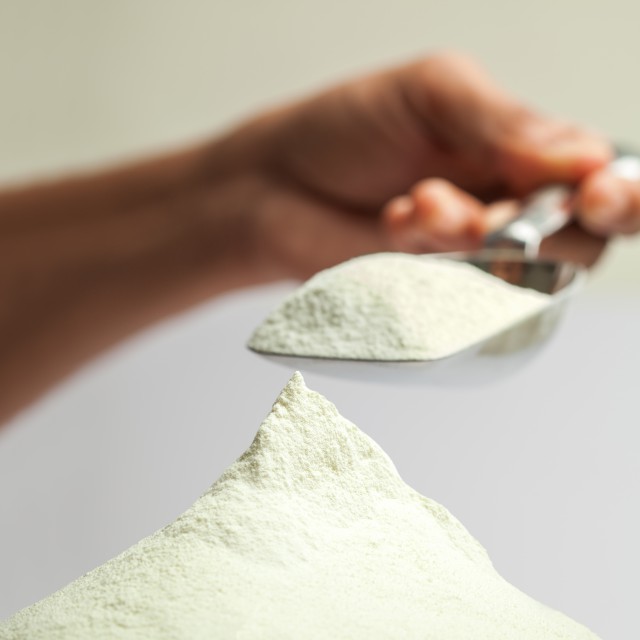China’s infant milk formula (IMF) market is poised for impressive growth in the next five years as a result of the new ‘two-child’ national policy, and new regulations issued by the China Food and Drug Administration or CFDA.
New research from Mintel predicts that the market volume of infant milk formula in China will grow by a compound annual growth rate of 5.4% between 2016 and 2021.
Mintel reveals that organic options may be the driving force of the growth, as 75% of Chinese mothers feed their babies organic infant milk formula.
Consumer demand
Younger mothers in particular are interested in organic formula options, with 79% of mothers aged 25-34 using this product.
Mintropolitans (China’s new middle class as defined by Mintel) also over-index on organic infant milk formula usage, with nine in 10 (89%) saying that they use these products – a significantly higher proportion than consumers overall (72%).
Mintel research finds that half of mothers (49%) say they choose organic infant milk formula because they are “willing to pay more for their baby’s food”.
This is also the main driver for them to choose niche products, such as goat IMF (41%).
Liquid IMF has yet to gain awareness in the Chinese market, despite its popular reputation in the West.
Research from Mintel Global New Products Database (GNPD) shows that the UK and US lead in liquid infant milk formula launch activity with 41.7% of launches in 2016 occurring in the UK and 21.4% in the US, while none launched in China.
“Our research indicates that high-end and niche baby food and drink products have great potential in the Chinese market,” says food and drink analyst Cheryl Ni.
“Organic infant milk formula has experienced a high adoption rate, indicating that consumers with more spending power are willing to pay a premium for products they perceive to be better for their infants.”
“Premium infant milk formula products will become the focus of leading companies who meet infant formula registration measures.”
Mintel research reveals that 65% of surveyed mothers claim they have used IMF from foreign brands from June to December 2016 compared to 33% who have used IMF from local brands.
However, brand selection changes when considering the number of children in the household, in light of China’s two-child policy.
Chinese brands are more popular among mothers who have two or more babies (44% compared to 33% overall) and the penetration of foreign brands climbs to 70% among those who do not plan to have a second child.
Foreign IMF brands are popular
Meanwhile, consumer preferences seem to differ across China when it comes to foreign and local IMF brands.
In general, foreign brands have gained more fans in Shanghai (71%) and Guangzhou (76%), while only 37% of consumers in Beijing prefer to purchase local IMF brands.
In addition, Mintropolitans tend to prefer purchasing IMF from foreign brands (67%), particularly from domestic online shopping websites (39% compared to 31% overall) and overseas online shopping websites (39% compared to 29% overall).
However, 46% of urban Chinese mothers say they often purchase IMF from specialized mother and baby care stores.
Milk is better in ANZ
Regarding the milk source, more than half (57%) of Chinese mothers think products from Australia or New Zealand are better than those from other milk sources.
Although 18% of Chinese mothers think the milk source in China is associated with a premium image, it is still considered to be “suitable for Chinese babies” and is one of the most recognized and important claims for these mothers (57%).
One third of mothers believe China and Northern Europe (32% for both) to be sources of fresh milk, while just 28% believe the same to be true of North America.
“Having a second child will undoubtedly influence mums’ brand selection as finances could become stretched with two babies, driving mums to seek out more cost effective products,” says Ni.
“We find that economic conditions and level of education can also affect mums’ brand preference when it comes to buying products for their children.”
“Brands would do well to give more details about milk sourcing to better engage with mums looking for better-for-baby options.”
“Adapting to evolving distribution channels will be one of the key drivers of business growth in this market.”
Milk products and breastfeeding
In light of societal and governmental encouragement for mothers to breastfeed, Mintel data reveals that Chinese mothers are particularly serious about breastfeeding when their babies are younger than six months, with the percentage of mothers reaching 90%.
However, most mothers switch to IMF when their babies are between six and 12 months, as Mintel research shows that the proportion of mothers who use IMF more than once a day rises to 71% from 47% during this crucial period.
Some 40% surveyed mothers agree that milk formula developed for breastfeeding mothers can make breast milk more nutritious, rising up to 43% of young mothers aged 20-24.
“The rise of breastfeeding will have a direct impact on the sales of infant milk products,” says Ni.
“However, some brands are already recognizing the issue, and are expanding product portfolios to gain a competitive edge by offering milk formula products for pregnant and lactating women, as well as by offering advice on pregnant/lactating women’s diet, recipe, and exercise among others.”










